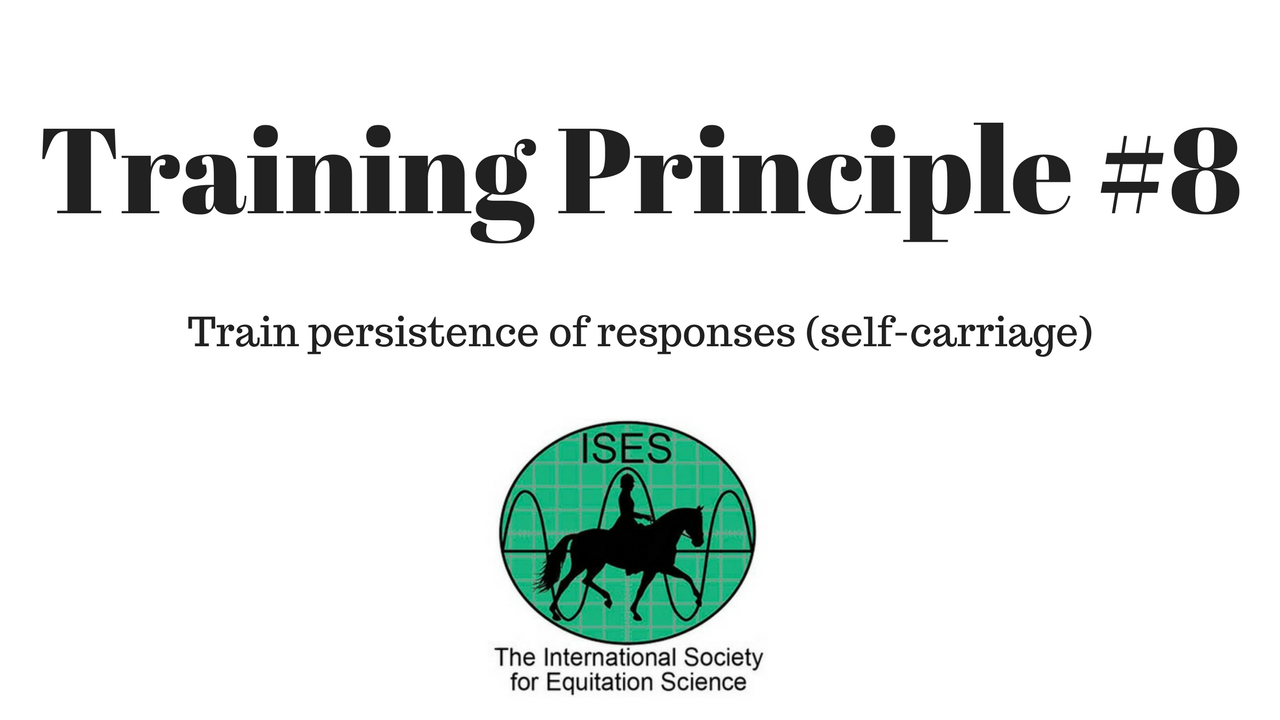
This principle is so important and so often forgotten. Train persistence of responses - it sounds simple enough but what exactly does it mean? Well, it means 'self-carriage'.
We often think that self-carriage refers to the frame the horse is travelling in or if the horse is 'on the bit' or 'through from behind' - a few terms we've discussed previously in this series and found them to be difficult to define and almost impossible to measure. However, that's really not what it's all about.
Persistence of responses, or self-carriage, is the horse carrying itself and maintaining gait and line without constant correction or adjustment from the rider. For example, if I want to ride from one tree to another in the field, I pop the horse into a working trot and set off on my line - a horse in self-carriage will maintain that line, gait of trot and speed within that gait until cued to do otherwise (possibly stopping or turning rather than hitting the tree, haha).
There's a commonly used saying, 'we learn from our mistakes' and this is never so true as it is for the horse when learning self-carriage. If you've ever ridden a horse that needs to be 'ridden every stride' or kicked every few seconds to maintain a trot or canter, then you've witnessed this for yourself. Such a horse is not in self-carriage because it has always been 'corrected' before the mistake of going off course, slowing down or changing gait was made. We can all feel when the horse is going to fall out of canter, for example. When we are training, we need to allow the horse to 'make the mistake' of falling out of gait. When this happens we again apply pressure (voice, leg or additional pressure such as a whip tap) until the horse is back in canter and then release the pressure. The horse then learns that pressure is applied when it falls out of canter and released when it is back in canter.
Most of us have ridden horses that are in self-carriage and those that aren't - what's the main difference between the two riding experiences? Let me know in the comments below.
If you'd like this series delivered directly to your inbox, click here.

